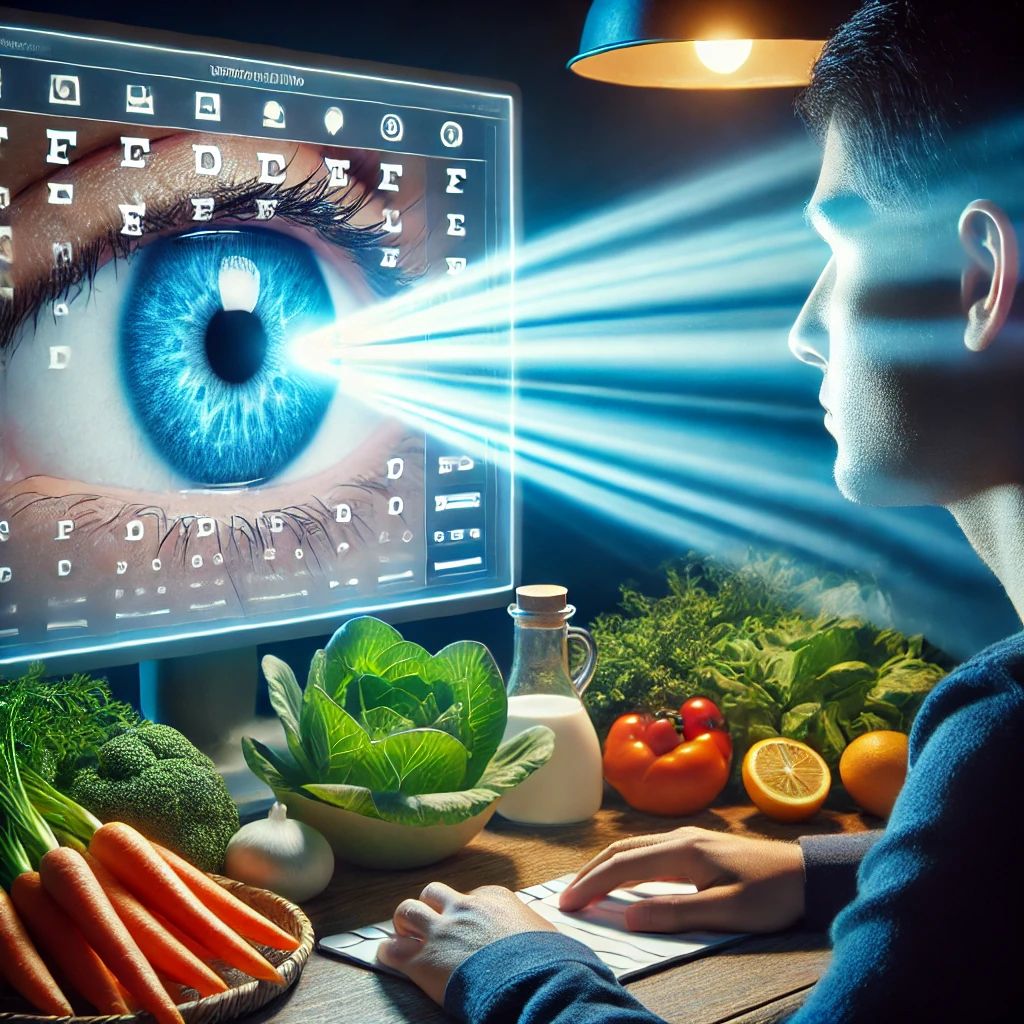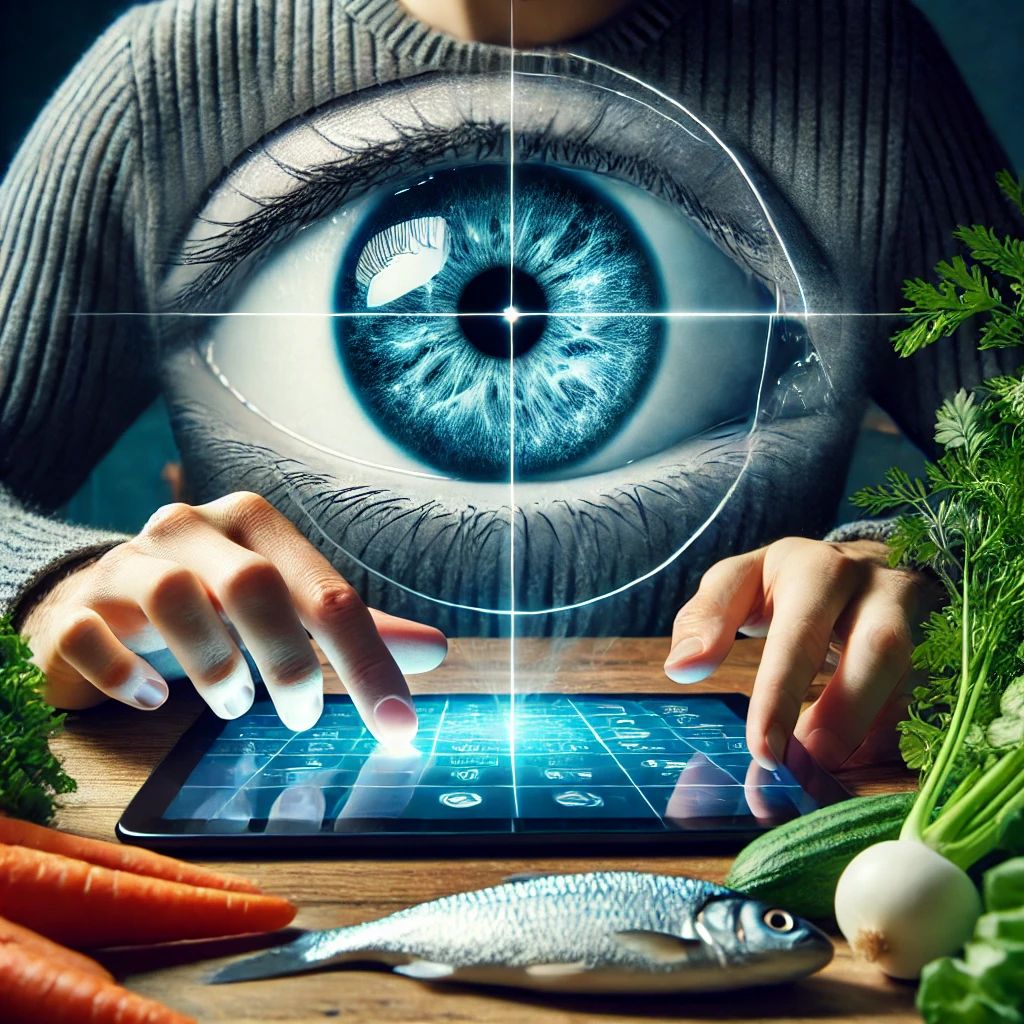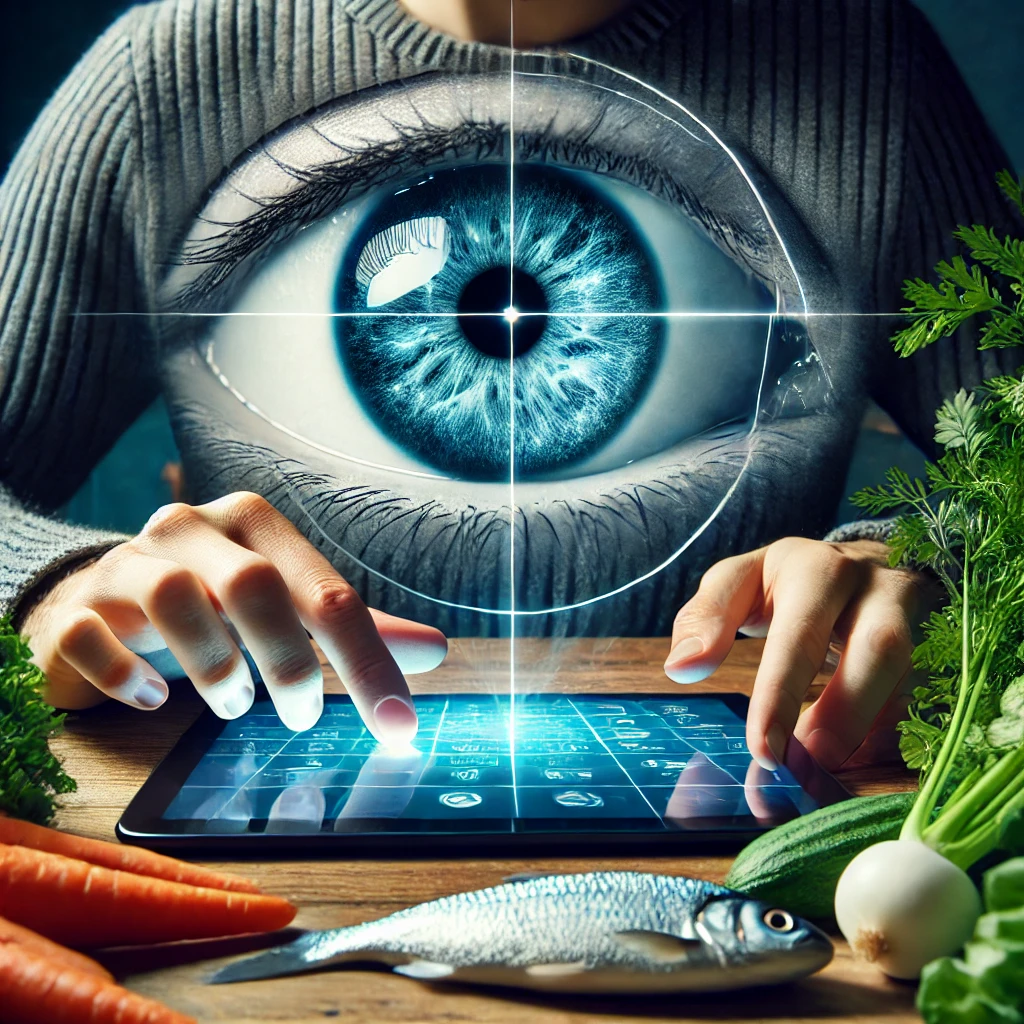In today’s world, screens are everywhere—from smartphones to computers and televisions. While these technologies offer convenience, they also pose risks to our eye health, especially with the harmful effects of blue light. To ensure we preserve our vision, it’s essential to be aware of the impacts of technology and take proactive measures through eye exercises and a vision-supporting diet. Let’s explore how you can protect your eyes in the digital age.

How Technology Affects Eye Health (Screens and Blue Light)
The increased use of digital devices has led to a condition known as digital eye strain or computer vision syndrome. This can cause:
Eye fatigue: Constant staring at screens causes your eye muscles to work harder, leading to fatigue.
Dry eyes: Less blinking while looking at screens leads to less moisture, causing dryness and irritation.
Blurred vision: Prolonged focus on close-up objects can blur your vision for distant objects, known as temporary myopia.
One of the biggest concerns is blue light, which is emitted from digital screens. Blue light can penetrate deep into the eye and has been linked to macular degeneration over time, which can affect long-term vision. It also disrupts your sleep by suppressing the production of melatonin, making it harder to fall asleep after prolonged exposure.

Ways to reduce blue light exposure:
Use blue light filters on your devices.
Take breaks using the 20-20-20 rule: every 20 minutes, look at something 20 feet away for 20 seconds.
Adjust your screen settings for brightness and contrast to reduce eye strain.
Protect Your Eyes: Exercises to Improve Vision
Just like any other part of the body, your eyes can benefit from regular exercises. These exercises can help reduce strain and improve overall eye function:
Focus change exercise: Hold your thumb about 10 inches from your face and focus on it. Then shift your focus to something 15-20 feet away. Repeat this 10 times to help strengthen your eye muscles.
Eye rolling: Slowly roll your eyes in a circular motion, first clockwise and then counterclockwise. This helps improve circulation to the eye muscles and relaxes tension.
Palming: Rub your hands together to generate heat, then place them gently over your closed eyes. This technique relaxes the muscles around the eyes and reduces strain.
Near and far focus: Focus on a nearby object for 10-15 seconds, then quickly shift your gaze to a distant object. This helps improve flexibility in focusing and strengthens the eye’s focusing muscles.
Regularly performing these exercises can help reduce the strain caused by long hours in front of screens and can maintain eye health over time.
Protect Your Eyes: Nutrition for Better Vision
A healthy diet is crucial for maintaining good vision. Here are some nutrients that support eye health:
Vitamin A: Essential for maintaining a healthy retina and preventing night blindness. Foods like carrots, sweet potatoes, and leafy greens are rich in vitamin A.
Lutein and Zeaxanthin: These antioxidants protect the eyes from harmful blue light and reduce the risk of macular degeneration. They are found in eggs, spinach, and kale.
Omega-3 fatty acids: Help in reducing dry eye symptoms and support retinal function. Fatty fish like salmon and flaxseeds are excellent sources of omega-3.
Vitamin C: This antioxidant strengthens blood vessels in the eyes and helps reduce the risk of cataracts. Oranges, strawberries, and broccoli are great sources of vitamin C.
Zinc: Aids in the absorption of vitamin A and plays a key role in eye health. You can find zinc in nuts, seeds, and meat.

By incorporating these nutrients into your diet, you can support your eyes in functioning optimally and even slow the progression of age-related eye diseases.
In our fast-paced digital world, protecting our vision is more important than ever. With increasing screen time, it’s crucial to reduce blue light exposure, practice vision-boosting exercises, and maintain a nutrient-rich diet to support eye health. By taking these steps, you can keep your eyes healthy, reduce strain, and enjoy clear vision for years to come. Don’t let technology take a toll on your eyes—be proactive and care for your vision today!
For more healthy tips and useful information, be sure to check out our Health Journal and the Healthy Habits page. Find inspiration to maintain healthy habits and improve your well-being.
More Useful Links:
Spending Time in Darkness: Can It Really Improve Vision or Is It Just a Myth?
Reducing Blue Light Exposure: The Path to Better Mental Health and Quality Sleep
Digital Detox: How Disconnecting from Technology Can Boost Creativity
Detoxification and Body Shaping: Natural Teas and Drinks That Will Transform Your Look
